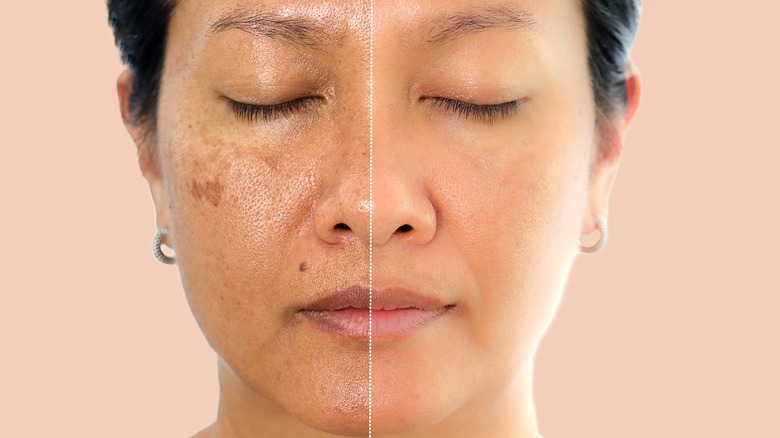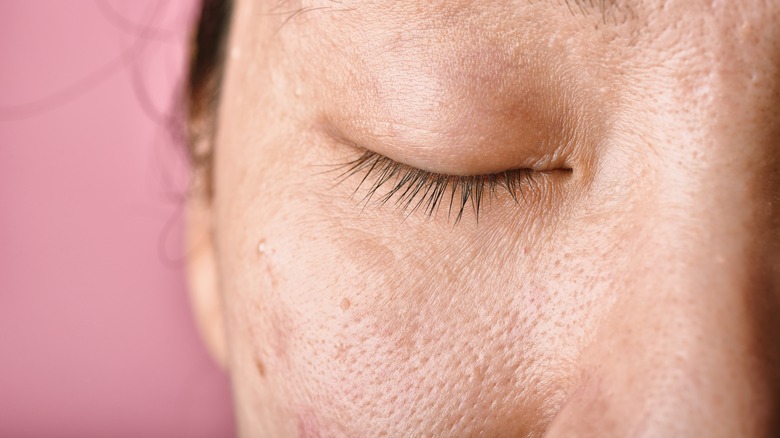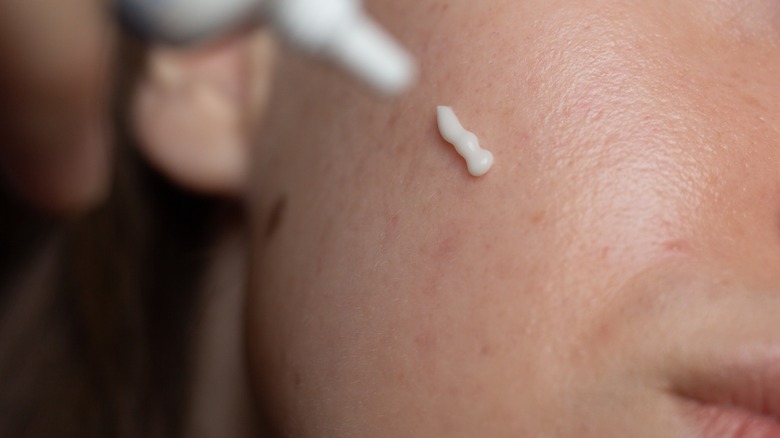How Adding Tretinoin To Your Skin Care Routine Can Deliver Clearer Pores
The topic of skincare, especially if you're dealing with skin conditions like acne or hyperpigmentation, can feel confusing. There are a lot of products out there and each one has its merits, uses, and side effects. If you're on a journey toward clearer skin or you're looking for products that help with fine lines or wrinkles, your Google search may have provided with you a myriad of options, one of which would've likely been tretinoin.
What is tretinoin? According to board-certified dermatologist Dr. David Lortscher, tretinoin is "one of the most powerful and widely researched vitamin A derivatives (retinoids)," via Byrdie. If you're looking for a multi-purpose product that treats pimples, signs of aging, and uneven skin tone, and also a product that dermatologists consider a game-changer, tretinoin would be your go-to. You may have seen the ingredient being grouped with other retinoids like retinol. There is a however, a difference between tretinoin and retinol. Lortscher explained that tretinoin is about 20 times more potent than retinol.
Pore minimization is another focal point of many people's skincare goals. How can adding tretinoin to your skincare routine help with clearer pores?
Tretinoin prevents clogged pores
Everyone would like to have clearer pores, and for those with acne-prone skin, this becomes even more important. There is a lot going on in and on our skin daily that can cause our pores to become clogged — including natural oil production and buildup of dirt and dead skin cells. Clogged pores are one of the leading causes of pimples.
Dermatologist Anna Karp told Byrdie that one of the uses of tretinoin is to achieve clearer pores. "Acne is a multi-factorial disease with increased dead skin cells filling up in our pores, causing comedones. Bacteria often colonize the pore, leading to worse acne," she explained. Tretinoin prevents the clogging of pores by getting rid of dead skin cells. It also helps exfoliate the skin, increases collagen production, and escalates your skin cell turnover rate, all of which help with the appearance and cleanliness of your pores.
Tretinoin is also great for those looking to build a skincare routine for aging skin. In addition to boosting collagen production, which is key to achieving youthful-looking skin, tretinoin is also great at reducing the appearance of fine lines and wrinkles. According to Lortscher, the product really is the best topical skincare when it comes to fighting the signs of aging.
How to use tretinoin properly
Tretinoin user and skincare enthusiast Jennifer Myers cautioned in a YouTube video that patience, deliberate and consistent sun protection, and a general philosophy that less is more are the key principles to follow when you start using the ingredient. Your skin can start to peel, become irritated, and redden if you end up using more than what's necessary. Starting slow (maybe once or twice a week) and gradually building up the frequency is the way to go. Many dermatologists would recommend only using a pea-sized amount on your face. You'd also probably do well to avoid other products with ingredients that could potentially irritate skin when you're using tretinoin. Think alpha hydroxy acids and even some beta hydroxy acids, according to dermatologist Dr. Andrea Dray. SPF protection is a must as well.
Since the product is more potent than some other retinoids that you might be used to buying over the counter at a drug store or even at supermarkets, tretinoin has to go hand-in-hand with your dermatologist's recommendation and advice. In fact, you likely won't be able to purchase any creams, lotions, or liquid forms of the ingredient without a prescription from a doctor.
According to Karp, dryness is one of the main side effects you should watch out for. Making sure you apply a moisturizer before tretinoin use can help with this problem.


